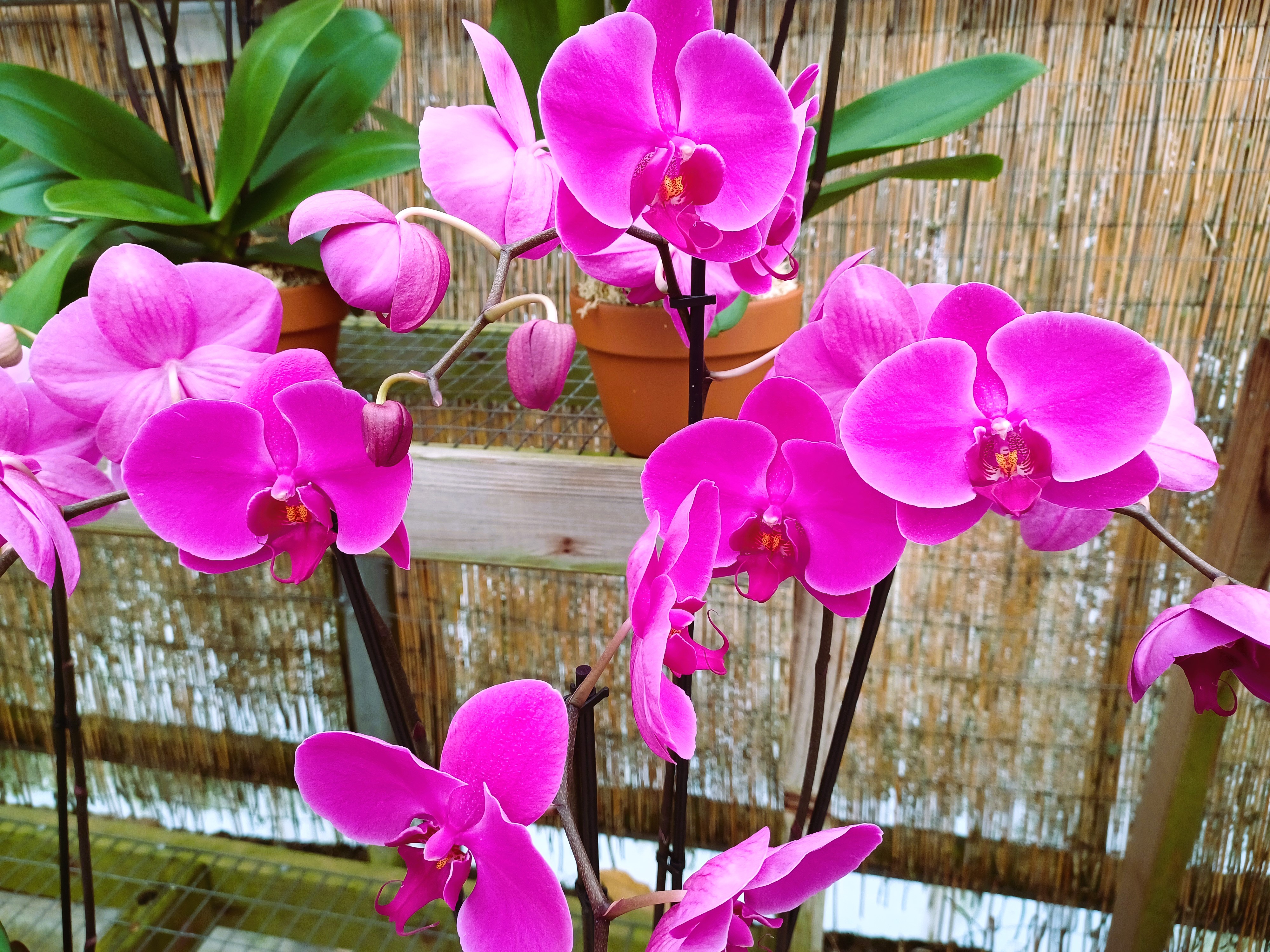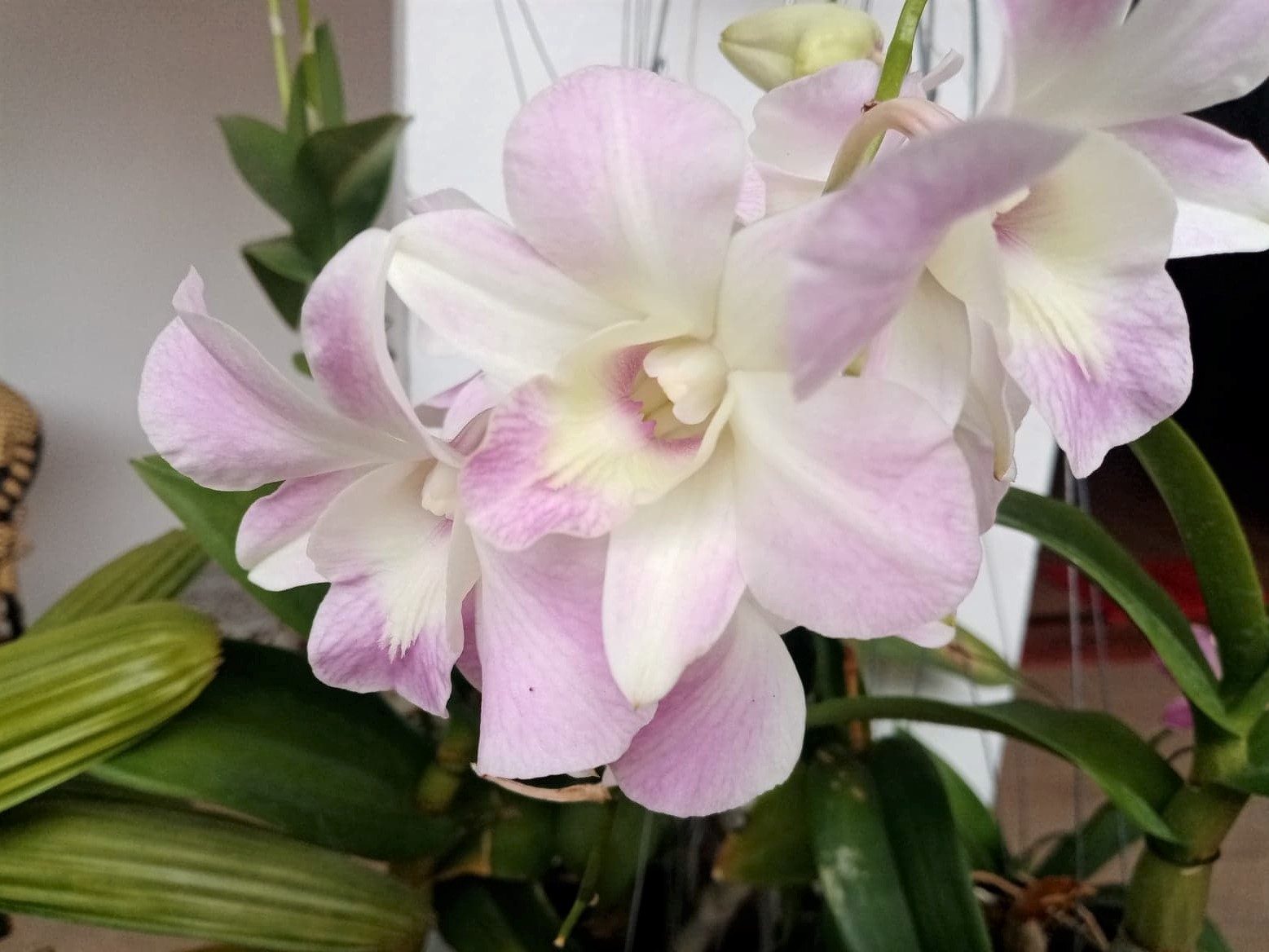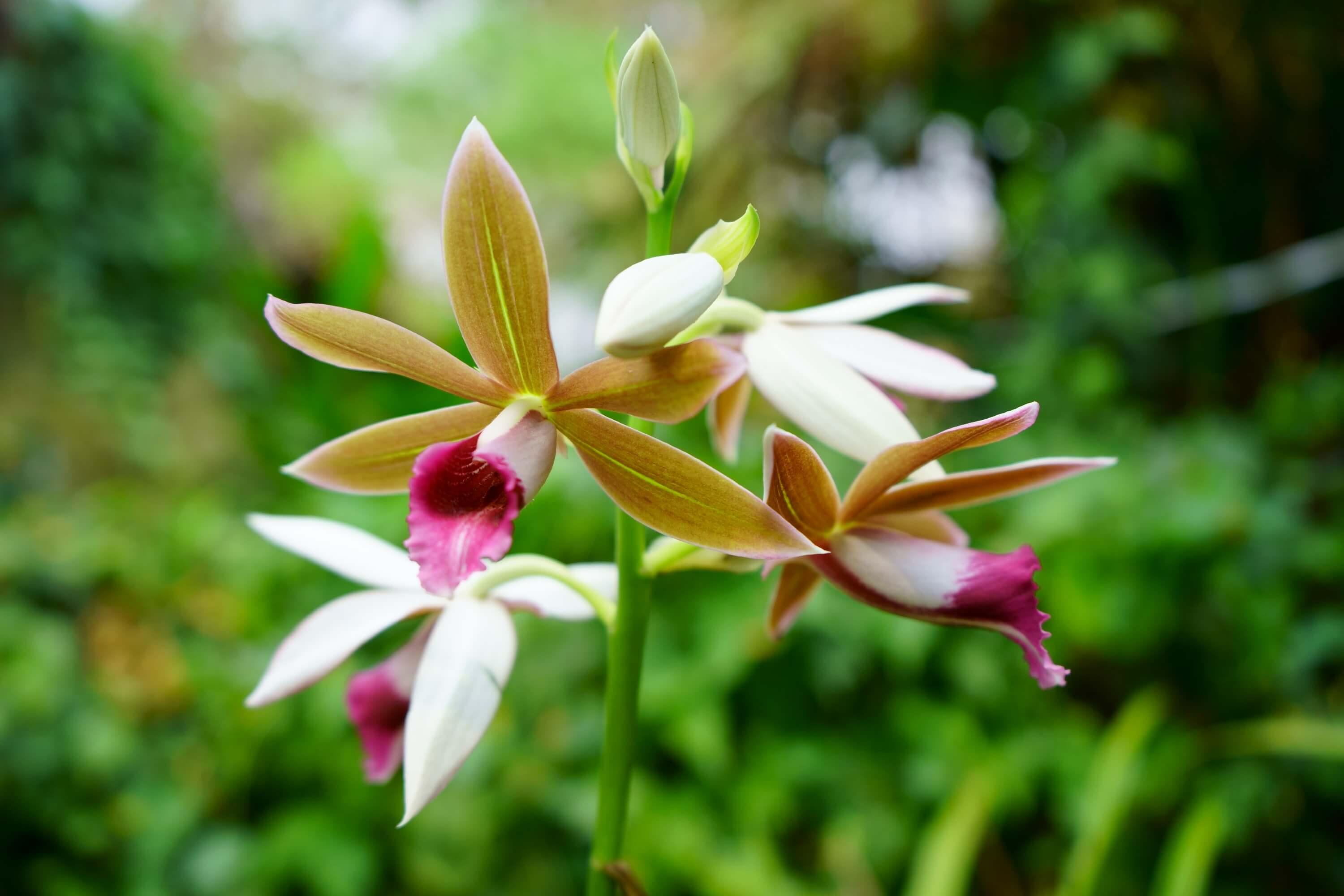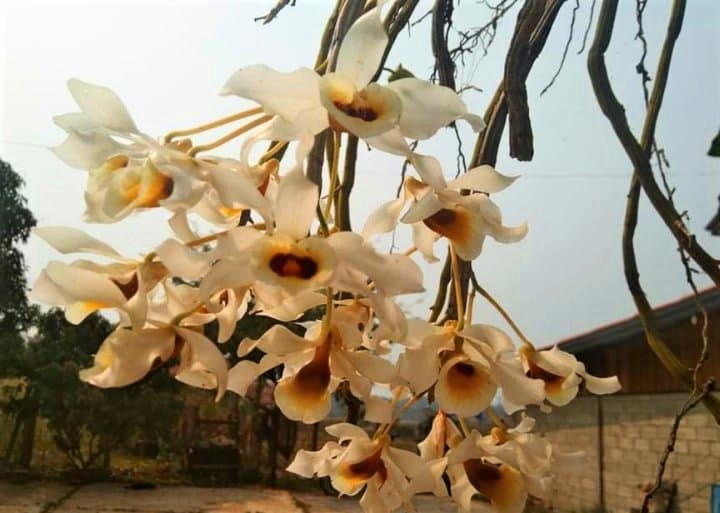The Different Types of Orchids
There are so many different types of orchids, they are some of the most diverse and beautiful plants in the entire plant kingdom. With over 800 genera and 26,000 species, wild orchids are found in almost every corner of the world, with many more still being discovered. There are several types of orchids in cultivation, each with its unique characteristics and appeal. Just a century ago, orchids were available only to the upper class, they were very exotic, rare, mysterious and expensive plants. Today orchids are available to people from all walks of life, and here are some of the most popular orchids available on the market.
Phalaenopsis
Phalaenopsis orchids, also known as moth orchids, are one of the most popular types of orchids that are widely cultivated in the world. Of the many different types of orchids, these orchids are native to southeast Asia and produce beautiful exotic flowers in a vast array of colors, including white, pink, magenta, yellow, and purple. They are relatively easy to care for, making them ideal for beginners. They thrive in fairly low light, warm and humid conditions. They do well with regular watering and fertilizing, we recommend to water with a weak fertilizer solution on a weekly basis to keep your Phalaenopsis happy and healthy.
Expert tip: Phalaenopsis require night time temperatures to drop into the low to mid fifty (52°-56°) degrees Fahrenheit (11°-14° Celsius) in order to rebloom. By controlling the temperature of the growing room a few weeks in advance of the flowering season and providing the correct fertilizer you will induce flowering.

Miltoniopsis:
Miltoniopsis, commonly known as Pansy orchids, come from the high-altitude regions of South America. They have become increasingly popular for their strikingly beautiful flowers that come in a range of delicate pastel colors, including white, pink, yellow, and lavender. They are sensitive to temperature changes, and their care is more complex than that of Phalaenopsis.
To begin, it is important to understand the different types of orchids that exist. Orchids can be divided into two main categories: epiphytic and terrestrial. Epiphytic orchids grow on trees or other plants and are also referred to as air plants, while terrestrial orchids grow in soil. Miltoniopsis orchids fall into the epiphytic category, meaning that they require a growing medium that is suitable for epiphytic orchids.
When it comes to caring for miltoniopsis orchids, it is important to provide them with the right growing medium. The growing medium for these plants is typically made up of a mixture of tree bark, sphagnum moss, and perlite. Charcoal is also used in some growing mediums designed for Miltoniopsis. This combination provides the proper moisture retention, drainage and aeration that these epiphytic orchids need to thrive.
In addition to the proper growing medium, miltoniopsis orchids require a specific level of humidity and watering. These plants thrive in a humid environment, so it is recommended that they be kept in a location with a humidity level of around 50-70 percent. Additionally, they should be watered regularly, but not excessively. Miltoniopsis do not tolerate excessive fertilizer, so fertilize with a weak solution and flush with pure water once every two months. It is important to avoid letting the orchids sit in standing water, as this can lead to root rot.
Masdevallias:
Masdevallias orchids originate from the high altitude regions of the Andes Mountains. These orchids are known for their unique, triangular-shaped flowers that come in bright, vibrant colors ranging from red, purple, yellow, and orange. They require cooler temperatures, higher humidity, and more misting than other types of orchids, making them ideal for greenhouse cultivation.
Masdevallia orchids need special care due to their delicate nature. They require high humidity levels, indirect light, and a well-draining potting mix. These orchids are sensitive to changes in temperature and airflow, and prefer to be watered frequently but in small amounts. Placing a humidifier in the orchid growing room is beneficial to Masdevallia orchids. Proper fertilization and regular pruning are also important to maintain healthy growth. Due to their compact size and ornamental value, Masdevallia orchids are popular with collectors and enthusiasts.
Paphiopedilums:
Paphiopedilums, also known as lady slipper orchids, are popular for their beautiful, slipper-shaped flowers. They come in a variety of colors, including shades of pink, green, white, and yellow. Paphiopedilums require regular fertilizing and watering.
Paphiopedilum orchids, require moderate to bright indirect light, high humidity, and an evenly moist growing medium. They prefer temperatures between 60-80°F and should not be exposed to extreme heat or cold. It is important to keep their roots moist, but not excessively wet, and to fertilize them with a weak solution of fertilizer on a weekly basis. As with all orchids they should be repotted every 1-2 years and should be kept in a well-draining medium such as orchid bark.
Brassias:
Brassia orchids, also known as spider orchids, are best known for their spider-like appearance, with thin, elongated petals resembling spider legs. Varieties come in colors of green, white, yellow, and brown with various patterns spots or stripes. A complicated growing environment has resulted in these orchids being grown more commonly by experienced orchid enthusiasts.
Different Types of Orchids:Cattleyas
Cattleya orchids are famous for their large, showy flowers that come in various colors, including pink, purple, white, and yellow. They are native to South and Central America and thrive in warm, humid conditions. They are known for their intense fragrance and are widely cultivated for the perfume industry.
Cattleya orchids are tropical flowers that are prized for their vibrant colors and exotic appearance. To care for these plants properly, it is important to provide them with the right growing conditions and maintenance.
The first step in caring for Cattleya orchids is to ensure that they are planted in a well-drained orchid mix for Cattleya which is usually a combination of fir bark and charcoal.
These orchids require bright, indirect sunlight. As with most orchids avoid direct sunlight, which can burn their delicate leaves and flowers. It is also important to provide them with a humid environment. You can do this by placing a tray with water near the plant or by using a humidifier.
Cattleya orchids need to be watered frequently, but not too much. Make sure to water them enough to keep the growing medium moist, but avoid overwatering. It is important to allow the growing medium to dry out a bit between waterings.
Fertilizing is also an important part of caring for Cattleya orchids. They require a well-balanced fertilizer with a higher nitrogen content during their growth period in the spring and summer. During the fall and winter months, reduce fertilization to allow the plant to rest.
Miltonias and Oncidiums:
Miltonia and Oncidium orchids belong to the same family and are native to Central and South America. They bear flowers with a wide measure of hues, reminiscent of purple, pink, and orange with a spot in the middle. These orchids are more delicate to environmental conditions and require moderate humidity levels and careful temperature management to thrive.
Brassavolas:
Brassavola orchids are small, with sweet-scented, bell-shaped flowers. They are native to Mexico, Caribbean islands, and South America. These orchids require warm and bright growing environments with good airflow and minimal humidity.
Vanda's:
Last but not least, Vanda orchids are a special variety of orchids native to Southeast Asia that are known for their beauty, uniqueness, and exoticness. These orchids are highly prized among orchid enthusiasts and collectors owing to their vibrant colors, striking patterns, and tantalizing fragrance. Vanda Amnesiana is my personal favorite because of it's exquisite perfume that can permeate an enitire house.
Originating from tropical Southeast Asia, Vanda orchids are known for their long-lasting and beautiful blooms. They are epiphytes that grow on trees, absorbing nutrients and water through their aerial roots.
Vanda orchids come in an array of colors including shades of white, purple, blue, pink, yellow, and orange. These orchids are often used in floral arrangements and bouquets, making them a popular choice for weddings and special occasions.
What makes Vanda orchids truly special is their durability and resilience. They can survive for years with proper care and attention, making them a beloved addition to any orchid collection. These orchids require bright, indirect light, high humidity, and a consistent water and fertilization schedule. While they may require a little extra effort in terms of care, the reward is a stunning and long-lasting flower display.
They are highly sought after by orchid enthusiasts and collectors, making them a valuable addition to any collection.
The vast diversity of the different types of orchids offers something for everyone, regardless of their experience with growing plants. The process of growing and caring for different types of orchids may vary, but the results are always rewarding – beautiful, exotic flowers that will awe all who see them.


